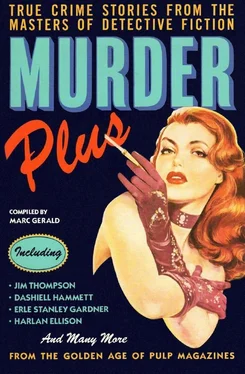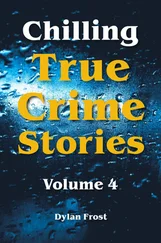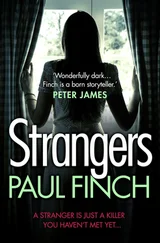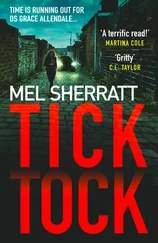Харлан Эллисон - Murder Plus - True Crime Stories From The Masters Of Detective Fiction
Здесь есть возможность читать онлайн «Харлан Эллисон - Murder Plus - True Crime Stories From The Masters Of Detective Fiction» весь текст электронной книги совершенно бесплатно (целиком полную версию без сокращений). В некоторых случаях можно слушать аудио, скачать через торрент в формате fb2 и присутствует краткое содержание. Город: New York, Год выпуска: 1992, ISBN: 1992, Издательство: Pharos Books, Жанр: Детектив, на английском языке. Описание произведения, (предисловие) а так же отзывы посетителей доступны на портале библиотеки ЛибКат.
- Название:Murder Plus: True Crime Stories From The Masters Of Detective Fiction
- Автор:
- Издательство:Pharos Books
- Жанр:
- Год:1992
- Город:New York
- ISBN:978-0-88687-662-3
- Рейтинг книги:4 / 5. Голосов: 1
-
Избранное:Добавить в избранное
- Отзывы:
-
Ваша оценка:
- 80
- 1
- 2
- 3
- 4
- 5
Murder Plus: True Crime Stories From The Masters Of Detective Fiction: краткое содержание, описание и аннотация
Предлагаем к чтению аннотацию, описание, краткое содержание или предисловие (зависит от того, что написал сам автор книги «Murder Plus: True Crime Stories From The Masters Of Detective Fiction»). Если вы не нашли необходимую информацию о книге — напишите в комментариях, мы постараемся отыскать её.
Murder Plus: True Crime Stories From The Masters Of Detective Fiction — читать онлайн бесплатно полную книгу (весь текст) целиком
Ниже представлен текст книги, разбитый по страницам. Система сохранения места последней прочитанной страницы, позволяет с удобством читать онлайн бесплатно книгу «Murder Plus: True Crime Stories From The Masters Of Detective Fiction», без необходимости каждый раз заново искать на чём Вы остановились. Поставьте закладку, и сможете в любой момент перейти на страницу, на которой закончили чтение.
Интервал:
Закладка:
“Do you think that was his real name?”
“I don’t know that he ever used another. He was rather short and stocky. He had strong, thick shoulders. I would say he was between twenty-eight and thirty-two years old. His hair was brown and he had blue eyes, and his face was ruddy. He wore gold eyeglasses. His clothes were like a minister’s — black suit and high collar.”
“His weight and height?”
“About five feet, six inches tall, I think, and he must have weighed about a hundred and forty-five pounds.”
The description fitted a man who Oleson said had danced the tango with Mildred at the Felecita!
Sheriff Kuhn received the report at Wheaton and sought sponsors of a tango class there. Hours of inquiry resulted only in word that no one had heard of plans for such a class.
But there were two men named Spencer in Wheaton!
Kuhn hurried to one, a merchant. He did not answer the description of the mystery man, and he promptly accounted for all his movements on the night of September 26th.
The second, a younger man, denied he had ever been interested in the tango or in any dancer. Mildred’s landlady looked at him and said he was not the admirer of Mildred.
The merchant then recalled that a salesman named Spencer often came to Wheaton on business. Detectives rushed eagerly to the salesman’s employers in Chicago.
That young man, records and correspondence proved, had been in southern Illinois the night of the crime. While the detectives were in the office the salesman came in. He did not fit the description of the hunted man given by the victim’s landlady.
“Three Spencers!” Halpin groaned, “and not the man we want. I hope we don’t have to sift out all the Spencers in Illinois.”
Halpin rechecked the descriptions given of the man who had been seen on the train.
The train attendants and the farm manager’s wife agreed that he had been stocky, short and brown-haired, and had worn a dark suit.
Sheriff Kuhn telephoned his report to Halpin then. He had ordered with results, a wide search of the area along the Elgin, Joliet & Eastern tracks. A deputy had found, hidden in a marshy spot near the tracks, a heavy hammer wrapped in a towel, and a newspaper dated September 23rd. The hammer bore the imprint of a Chicago hardware dealer. It weighed three pounds.
Halpin dispatched detectives to the store. It was hard to figure out what part the hammer had played in the case. The dancer had been shot and, apparently, had not been struck on the head. Had the killer planned the murder long in advance, planned to kill with the hammer — and secreted it there on September 23rd?
Halpin was eager for the report from the store. But the new clue failed. The store had sold many such hammers to mechanics, and there were no records kept of such sales.
“This murderer has all Chicago to hide in,” Halpin told his men. “But we’ve got to dig him out, quick. It’s an even chance he thinks that he is safe and that the city is the best place for him to keep under cover. Maybe he has used the name of Spencer only in his contacts with the girl he killed. He may think he’s perfectly safe under another name.
“But I have a hunch this fellow will show up again around the dance halls. I don’t believe he will stay away from girls very long. We’re going to cover such places, and we’re going to get a lead on him, or find him, in one of them.”
Halpin mapped an amazing campaign of vigilance over dance halls, schools and clubs, concentrating on those of the South Side. District captains were instructed to have plainclothes on the watch for the mysterious Spencer, described fully in communications to the captains. And Halpin sent his best men to the halls to mingle with the dancers, to be attentive to the girls, and to talk about the tango murder case with them, while watching always for the appearance of a short, thick-shouldered man wearing gold eyeglasses.
Surely, Halpin reasoned, the slayer would come forth from wherever he had been hiding, harassed mentally by his guilt to find a measure of relief in the satisfaction of his craving for companionship with women. The tango, newly imported from the Latin countries, had won many to its seductive grace. Perhaps the man of gun and hammer was an addict and would be unable to resist the lure of the Spanish music and the exhilaration of embraces of young girls to its fascinating rhythm.
Three nights passed without result. Halpin sent new instructions to his captains, to insure that police on post would watch every report carefully.
“The fellow has got to come out into the open,” Halpin said. “He’s got to try to forget that scene on the railroad tracks. He’ll go looking for girls — and he may betray himself in doing it.”
The next night a detective phoned Halpin.
“I’ve got something,” he said. “I’ve met a girl in a hall who says she knew a guy that looked like Spencer and was tango-crazy. A few nights ago he danced with her, and he invited her to have a drink at a party at his house. She went out with him, but found that the house was just a rooming place and that there was no party. She left him. She said he mentioned having known Mildred Allison. The fellow was nervous and excited, she said. The house is near the Felecita Club.”
Halpin rushed to the address with half-a-dozen detectives. While front and rear were guarded, the captain and two men entered and found the landlady. They described the man, and she indicated a room at the head of the stairs.
The room was dark, it seemed. Halpin tired the door. It was locked. He rapped. There was no sound within. The three men put their shoulders to it and broke the door open.
The room was empty, but the bed was rumpled as if recently occupied.
The frightened landlady said she had made it up early that afternoon.
“What was this fellow’s name?” Halpin demanded.
“He wouldn’t give a name,” she said. “He paid for a week, four days ago. But he had a suitcase, and it’s gone. It looks like he’s moved out.”
She described the tenant fully. The picture tallied exactly with that of Spencer, but she had not seen gold eyeglasses.
“He had a funny suitcase,” she said. “It was that wood stuff — rattan they call it.”
Mildred Allison’s suitcase had been of rattan!
“He’s our man,” Halpin said, “and we have had a tough break. Missed him by a couple of hours! But he’ll turn up again in this part of town. I’m betting.”
Again, while Spanish rhythms were played in the South Side dance halls and young men and girls and old men and girls swayed and pirouetted in the gyrations of the tango, detectives watched.
Halpin then got a report that a man resembling Spencer had been seen in a cheap dancing resort of unsavory reputation near Twenty-second and State streets. He sent more detectives into the area.
That night a woman told a uniformed patrolman that she had been threatened by a man who had taken a room in her house two days before.
The patrolman told one of Halpin’s detectives. The sleuth had been thinking only in terms of “Mr. Spencer,” and he considered this new development only in that light. He questioned this woman.
“Is the fellow short, brown-haired, with bulky shoulders?”
“Yes. How did you know?”
“Is he in your house now?”
“No, he went out. I meant to tell him he must vacate the room, but I was afraid to, after he threatened me during an argument because there wasn’t a lock on the door of his room.”
The detective hurried to the house and into the room. A high collar was on the dresser. Under a paper in a small drawer of a dresser he found a loaded .32-caliber pistol. In a corner of the room was a pair of shoes caked with mud.
“Maybe he was a thief. He had a woman’s diamond ring. He showed it to me,” the landlady said.
Читать дальшеИнтервал:
Закладка:
Похожие книги на «Murder Plus: True Crime Stories From The Masters Of Detective Fiction»
Представляем Вашему вниманию похожие книги на «Murder Plus: True Crime Stories From The Masters Of Detective Fiction» списком для выбора. Мы отобрали схожую по названию и смыслу литературу в надежде предоставить читателям больше вариантов отыскать новые, интересные, ещё непрочитанные произведения.
Обсуждение, отзывы о книге «Murder Plus: True Crime Stories From The Masters Of Detective Fiction» и просто собственные мнения читателей. Оставьте ваши комментарии, напишите, что Вы думаете о произведении, его смысле или главных героях. Укажите что конкретно понравилось, а что нет, и почему Вы так считаете.












